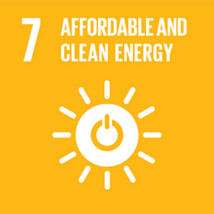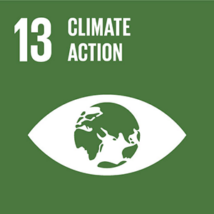Data Analytics and Modelling (DAM) is the backbone of AEEE’s diverse thematic work. We specialise in energy consumption data analytics, cutting across sectors, fuels, and activities to identify energy efficiency opportunities for effective policymaking and on-ground implementation. We focus on bridging critical data gaps in granular energy use data through primary data collection and transforming raw data into actionable insights.
![]() Goal
Goal
Harness the power of energy consumption data analytics and visualisation to support energy efficiency policymaking and on-ground implementation
Strategic Focus Areas
Building sector energy use benchmarking as a stepping stone for creating aspirational building performance standards and effective retrofit programmes
Bottom-up buildings sector energy modelling to develop future decarbonisation pathways
Data-driven enterprise energy management
Impact
SDGs being impacted:



Key Programmes and Projects
Towards Climate-smart Hospitals
The National Programme on Climate Change and Human Health (NPCCHH) envisions strengthening healthcare services to all Indian citizens, especially children, women, and marginalised populations, in the context of climate change. Launched in 2019, the program has steadily established momentum, engaging all states in initiatives to establish climate-resilient and environmentally friendly healthcare facilities. With the growing vulnerability to acute climate events across India, the Indian healthcare system should be able to withstand climate change adversities and still function, for which access to uninterrupted energy is an essential prerequisite. Energy forms an important component of the Health Adaptation Plan (HAP) and proposed framework for green (environmentally sustainable) and climate-resilient or climate-smart healthcare under the NPCCHH. Under the program, states have been sensitised and encouraged to address the energy-health nexus.
It is, hence, important to develop an understanding of the energy requirements for effective and efficient healthcare delivery, the unmet energy needs of healthcare facilities, the potential for deploying alternative sources of energy to meet the energy gap, and how to reduce energy-related greenhouse gas (GHG) emissions. With this overarching objective, the NPCCHH facilitated a unique, nation-wide survey to map and understand the energy consumption patterns in Indian healthcare facilities.
The study was conceptualised and conducted under the aegis of the NPCCHH, Ministry of Health and Family Welfare, Government of India, with technical support from the Alliance for Energy Efficient Economy (AEEE) and the Centre for Chronic Disease Control (CCDC).
This study acts as a starting point towards:
- Identifying areas of energy efficiency and renewable energy interventions in hospitals
- Formulating data-driven policies and programmes
- Identifying best practices and setting aspirational goals for hospitals towards climate-smart healthcare
Sustainable Green Airports Mission (SUGAM)
AEEE conducted the first-ever nationwide benchmarking of airports on behalf of the Airports Authority of India (AAI) as part of the Sustainable Green Airports Mission (SUGAM). AAI is setting an example among Indian public sector undertakings (PSUs) by being transparent about their energy consumption. Through this assessment, airports can compare their energy usage with similar airports and make improvements based on data-driven energy efficiency measures. AAI’s SUGAM offers a detailed analysis of energy usage and greenhouse gas emissions normalised by floor area, passenger traffic, and flight departures, for over 100 airports in India.
Dashboard and Data Stories
This section contains graphical retellings, in the form of interactive dashboards and data stories, of flagship projects that AEEE has contributed to. These data explorations will enable policymakers, businesses, and researchers to quickly dip into the key numbers and findings of our work.

